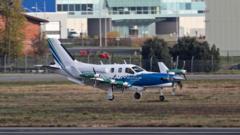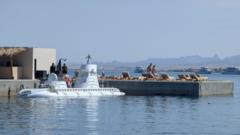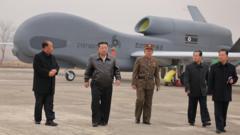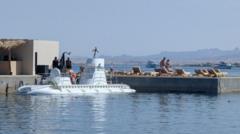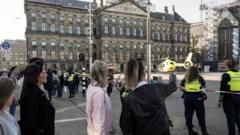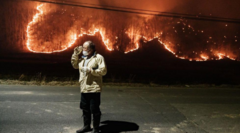A bird strike involving a Baikal teal may have contributed to the crash of a Jeju Air jet in South Korea in December, which claimed 179 lives. Investigators are now re-evaluating safety measures at airports following these revelations.
Investigators Uncover Bird Strike Link in South Korea's Jeju Air Crash
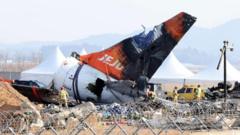
Investigators Uncover Bird Strike Link in South Korea's Jeju Air Crash
Preliminary findings reveal the role of Baikal teal bird strikes in the deadly December crash.
The investigation into the tragic December crash of a Jeju Air plane in South Korea, which resulted in the loss of 179 lives, has revealed significant findings linking the incident to a bird strike. Evidence gathered from both engines of the Boeing 737-800 revealed feathers and blood stains from the Baikal teal, a migratory duck renowned for flying in large flocks.
According to the preliminary report published on Monday, the inquiry will delve deeper into how this bird strike may have influenced the crash and will also scrutinize the concrete structure at the runway's end, into which the plane collided. This crash stands as the deadliest aviation incident on South Korean soil to date.
The ill-fated flight took off from Bangkok on December 29, headed for Muan International Airport. Shortly after establishing contact with the control tower, warnings of "bird activity" were issued. Just moments later, at 08:59, the pilot confirmed a bird strike had occurred and subsequently issued a mayday call. Attempting to land from an alternate direction, the aircraft belly-landed, lost its landing gear, and overran the runway, culminating in a catastrophic explosion upon impact with the concrete obstruction.
Previously available data suggests that critical flight recordings halted around four minutes before the crash, a concern that has sparked debate among aviation experts regarding the placement of the concrete barriers, which are used for a localiser navigation system to assist Iandings. Concerns have been voiced that the toll could have been considerably lower if those barriers hadn’t been present.
In response to the findings, South Korean authorities have announced plans to adapt the concrete barriers at seven airports nationwide and reassess runway safety protocols following a thorough review. The preliminary report has already been submitted to the United Nations’ aviation agency, along with relevant authorities in the United States, France, and Thailand. The investigation continues to illuminate the factors contributing to this tragic event, shaping future aviation safety standards.
According to the preliminary report published on Monday, the inquiry will delve deeper into how this bird strike may have influenced the crash and will also scrutinize the concrete structure at the runway's end, into which the plane collided. This crash stands as the deadliest aviation incident on South Korean soil to date.
The ill-fated flight took off from Bangkok on December 29, headed for Muan International Airport. Shortly after establishing contact with the control tower, warnings of "bird activity" were issued. Just moments later, at 08:59, the pilot confirmed a bird strike had occurred and subsequently issued a mayday call. Attempting to land from an alternate direction, the aircraft belly-landed, lost its landing gear, and overran the runway, culminating in a catastrophic explosion upon impact with the concrete obstruction.
Previously available data suggests that critical flight recordings halted around four minutes before the crash, a concern that has sparked debate among aviation experts regarding the placement of the concrete barriers, which are used for a localiser navigation system to assist Iandings. Concerns have been voiced that the toll could have been considerably lower if those barriers hadn’t been present.
In response to the findings, South Korean authorities have announced plans to adapt the concrete barriers at seven airports nationwide and reassess runway safety protocols following a thorough review. The preliminary report has already been submitted to the United Nations’ aviation agency, along with relevant authorities in the United States, France, and Thailand. The investigation continues to illuminate the factors contributing to this tragic event, shaping future aviation safety standards.



